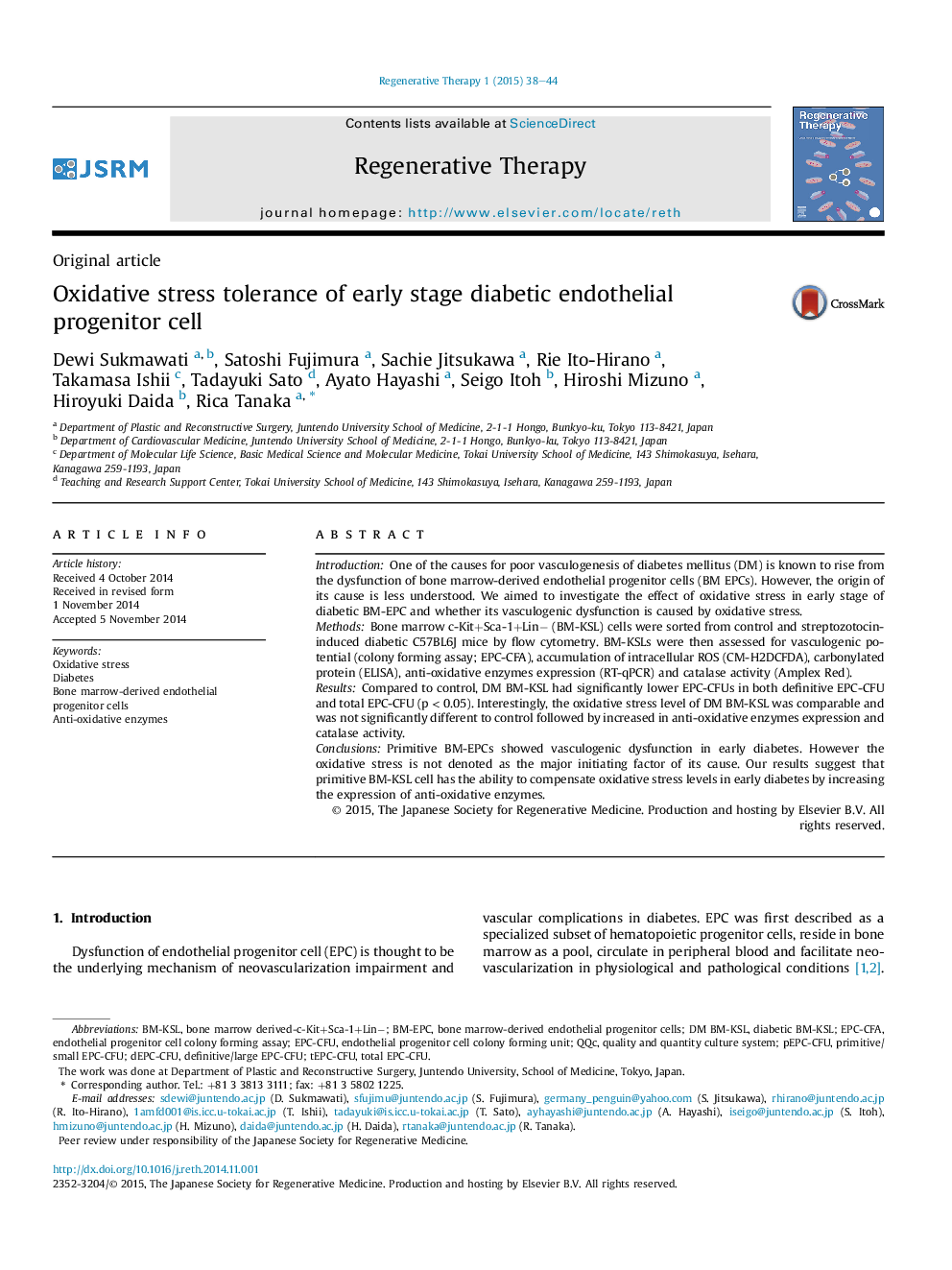| Article ID | Journal | Published Year | Pages | File Type |
|---|---|---|---|---|
| 2022336 | Regenerative Therapy | 2015 | 7 Pages |
•Primitive BM-EPC showed EPC-CFU dysfunction in early diabetes.•Primitive BM-EPC has the ability to withstand oxidative stress in early diabetes.•Early diabetic BM-EPC increased anti-oxidative expression to compensate oxidative stress.
IntroductionOne of the causes for poor vasculogenesis of diabetes mellitus (DM) is known to rise from the dysfunction of bone marrow-derived endothelial progenitor cells (BM EPCs). However, the origin of its cause is less understood. We aimed to investigate the effect of oxidative stress in early stage of diabetic BM-EPC and whether its vasculogenic dysfunction is caused by oxidative stress.MethodsBone marrow c-Kit+Sca-1+Lin− (BM-KSL) cells were sorted from control and streptozotocin-induced diabetic C57BL6J mice by flow cytometry. BM-KSLs were then assessed for vasculogenic potential (colony forming assay; EPC-CFA), accumulation of intracellular ROS (CM-H2DCFDA), carbonylated protein (ELISA), anti-oxidative enzymes expression (RT-qPCR) and catalase activity (Amplex Red).ResultsCompared to control, DM BM-KSL had significantly lower EPC-CFUs in both definitive EPC-CFU and total EPC-CFU (p < 0.05). Interestingly, the oxidative stress level of DM BM-KSL was comparable and was not significantly different to control followed by increased in anti-oxidative enzymes expression and catalase activity.ConclusionsPrimitive BM-EPCs showed vasculogenic dysfunction in early diabetes. However the oxidative stress is not denoted as the major initiating factor of its cause. Our results suggest that primitive BM-KSL cell has the ability to compensate oxidative stress levels in early diabetes by increasing the expression of anti-oxidative enzymes.
